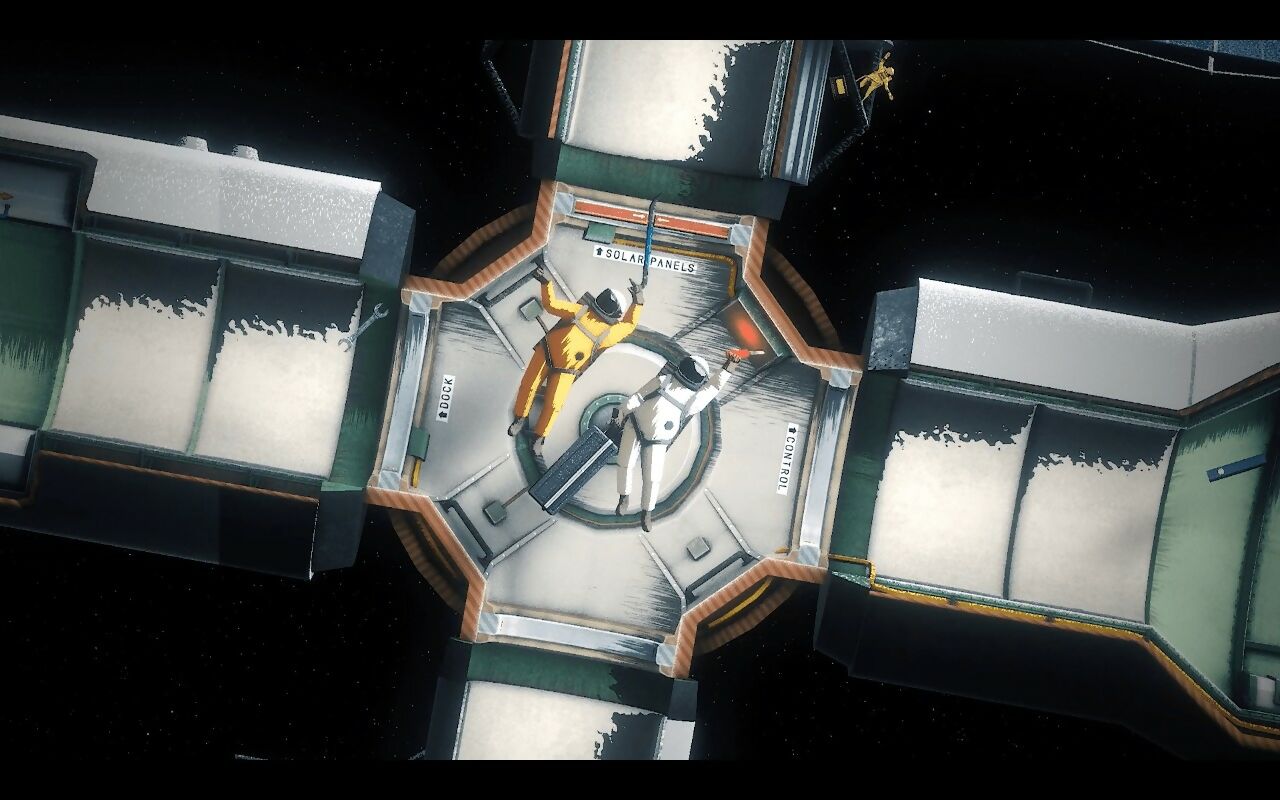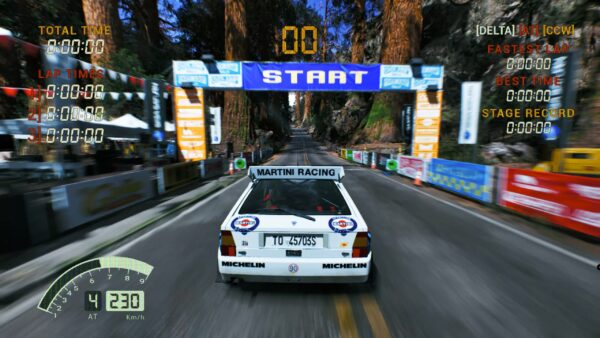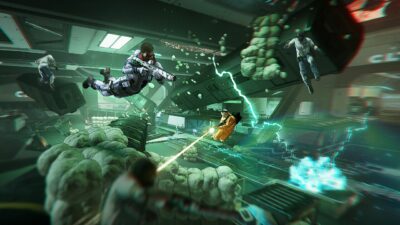
Remember Gravity, the 2013 film that cast Sandra Bullock and George Clooney as a pair of beleaguered astronauts clinging to life in our planet’s upper atmosphere? There’s more than a hint of that movie’s vibe flowing through Australian studio 2pt Interactive’s upcoming game, Heavenly Bodies.
Admittedly, their game lacks the movie’s star wattage, but ably harnesses the claustrophobia, danger, and sheer panic of working in a weightless environment – particularly when things start to go wrong, and you’re left grasping for something, anything to prevent you from being flung into the inky void.
Key to Heavenly Bodies’ action is its control system, in which your astronaut’s arms are individually moved with the left and right analogue sticks, while their grip is opened and closed with the left and right triggers. Pressing the shoulder buttons, meanwhile, will cause the astronaut’s legs to kick. This, allied to a detailed 2D simulation of a zero-gravity environment, results in one of those physics-based games where adapting to the controls is part of the challenge. “We wanted to create an experience which captures the nuances of manoeuvring in a weightless vacuum,” explains designer and visual artist Josh Tatangelo, “driven by what we imagined it must feel like to be on board something like the International Space Station, gracefully pushing down corridors and tumbling around. It was a compelling design problem for us, and it took many forms along the way as we iterated through ideas.”
Mastering the movement of your arms and legs, and using them to kick and haul yourself around the space station’s environment, soon becomes pivotal: even in the game’s quieter moments, you’ll be given routine maintenance tasks to complete that will require the careful operation of tools and switches. But eventually, inevitably, those cerebral moments will give way to critical situations where split-second decisions will mean the difference between life and death. “The scenarios we have planned all vary in intensity, ranging from slow-paced routine maintenance through to delicate machinery operation and tense [extra-vehicular activities, or scenes outside the space station],” Tatangelo tells us. “We find there is a natural drama that occurs in the game where, with one wrong move, seemingly simple tasks quickly elevate into an intense rescue mission. We like to play on this contrast and drama wherever possible rather than putting players directly in the path of danger – sometimes just getting the job done can be tense enough.”

Heavenly Bodies’ look is achieved with 3D models, hand-drawn textures, and custom shaders, and designed to evoke memories of old technical illustrations.
Fortunately, you don’t have to perform all these tasks alone – a friend can join the action as the George Clooney to your Sandra Bullock (or vice versa). “Everything can be accomplished alone, but having a friend in the same space opens up avenues for emergent play and role-play,” says Tatangelo. “We see co-op as an extension of the single-player experience that encourages creative play and exploration of interesting ways to get tasks done with someone else in the space, which can have a significant impact on the tone of the game, too. Things may seem quite stoic and serious with one person in the scene, and that then suddenly turns into a comedy when there are two people trying to work together.”
When an early gameplay demo emerged on Steam in 2019, one of Heavenly Bodies’ most immediately striking aspects was the detail of its zero-gravity simulation; open an air-lock door, and you could watch as the station’s contents got sucked out into space. According to director Alex Perrin, Unity’s built-in physics engine has done some of the heavy lifting here, so to speak, but fine-tuning how the player characters behave in this zero-gravity environment has required a lot of work behind the scenes. “One of the greatest challenges has been to have the player’s movement generally respect classical laws of motion whilst remaining at least somewhat intuitive and entertaining,” says Perrin. “Many players struggle with the idea of inertia and kinetic energy transfer to perform movement, so we’re making some more accessible movement modes available where players can swim with their arms and kick with their legs (don’t tell Newton).”

Although the game has a serious tone, we’re told there’ll be playful, even comical moments in Heavenly Bodies too. Anyone for tennis?
We had to ask, though: just how many objects can the game throw around in space? Can we expect the kinds of kaleidoscopic explosions of debris that we saw in the Gravity movie? “Surprisingly, we’ve yet to encounter the upper limit for how many objects we can simulate at once,” Perrin reveals. “As one of the greater computational bottlenecks for physics sims is collisions, it’s interesting to note that with the absence of gravity, there are actually very few objects in contact with surfaces at any given moment. Because of this, we’re comfortably playing in scenes where literally the entire level is physically simulated with many hundreds, if not thousands, of objects.”
With these interlocking systems in place, 2pt Interactive hope to make a game that’s elegant, sometimes faintly comical, and often very tense. Players will be rewarded for getting to grips with the control scheme, but all the same, Perrin says, the game will provide a stern challenge for even the most seasoned astronauts. “If there’s one thing we want to make clear, it’s that Heavenly Bodies is a tough game,” he tells us. “One of my favourite challenges, however, is having to reattach a disconnected RCS thruster for an asteroid mining craft that’s taken damage and is spinning out of control. It’s brain-bending and utterly terrifying.” You have been warned.

According to 2pt Interactive, research into real-world space stations has been extensive, but they’re not entirely beholden to realism.
Gravity: the next generation
As well as being available on PC and PS4, Heavenly Bodies will be among the earlier releases for the PlayStation 5. So will we see any enhancements in the next-gen edition? “It’s too early to say exactly what differences we’ll see between PS4 and PS5 versions,” Perrin says, “though we can pretty well guarantee that you’ll feel better performance and see general improved visual fidelity on the PS5. Physics-wise, we’ll have to see how far we can push the dials. Maybe we’ll need to start simulating things at an atomic level (just because we can).”
One area players will definitely be able to notice a difference, however, is in the PS5’s DualSense controller. “With the PS5’s DualSense controller, we’re excited to enable players to feel the surfaces they’re holding onto via adaptive triggers and juicy haptic feedback.”
Genre: Space-’em-up | Format: PS4 / PS5 / PC / Mac | Developer: 2pt Interactive | Publisher: 2pt Interactive | Release: August 2021





